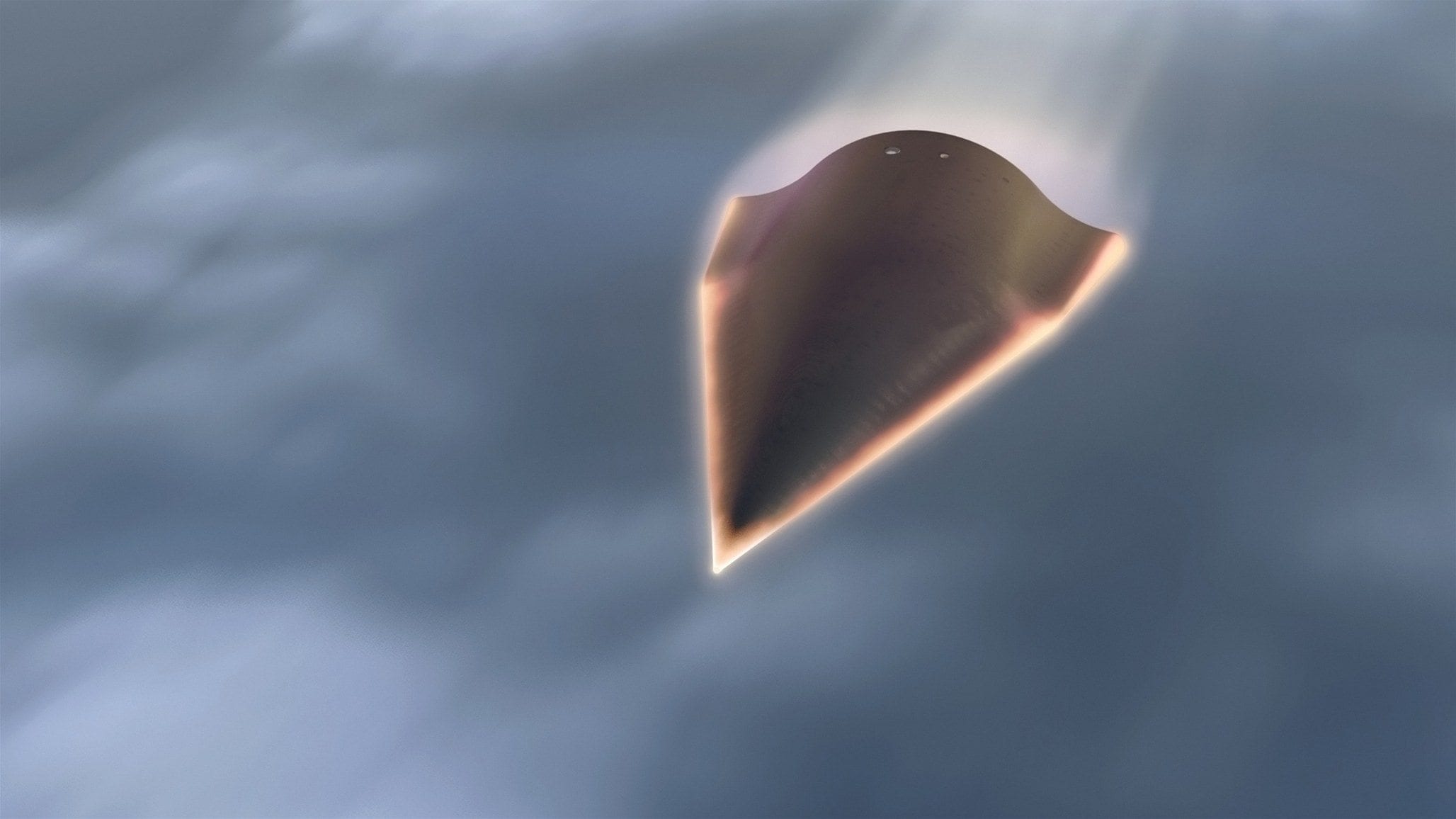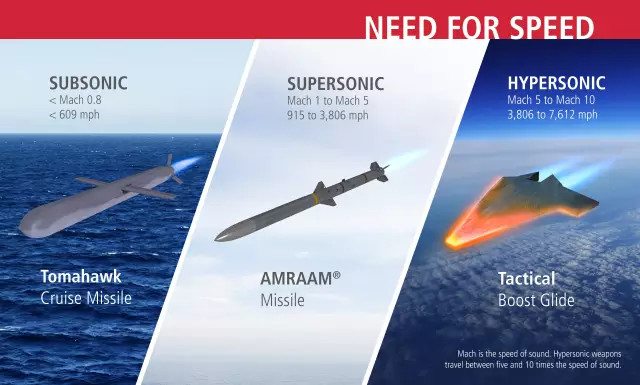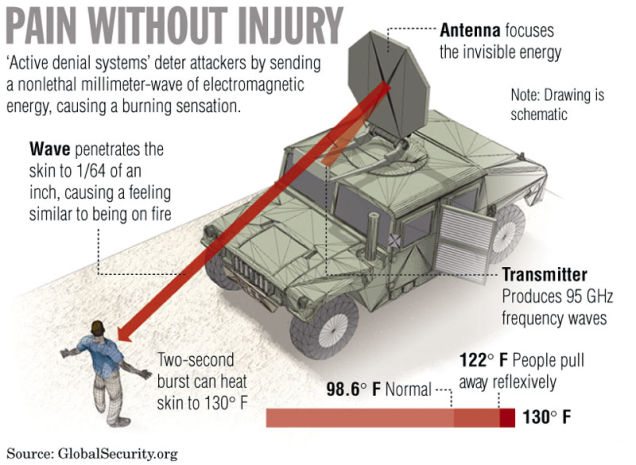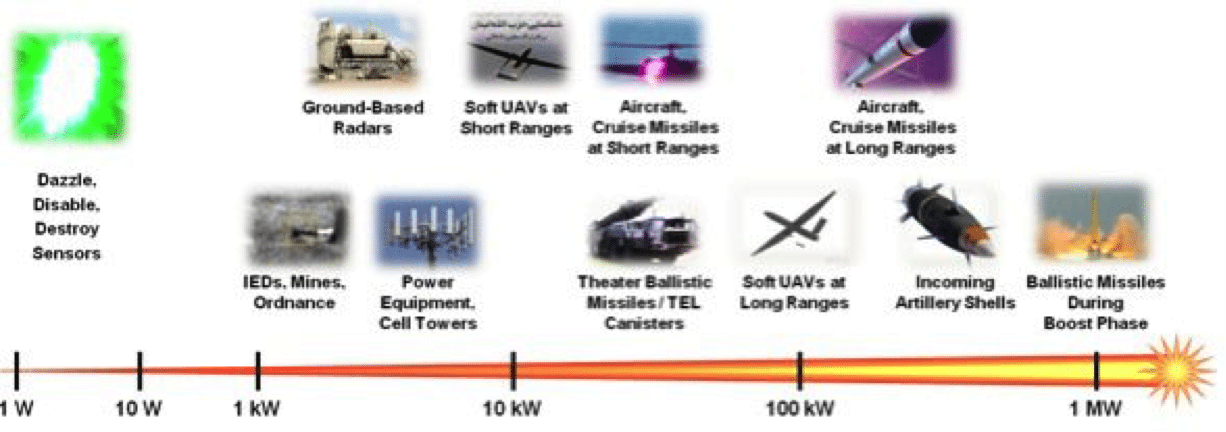The more assertive stance of the U.S. military, which has emerged from the accession of Donald Trump to the Presidency, has manifest itself in a somewhat dubious raid on Yemen by the Special Forces, the shelling of the Shayrat air base in Syria with 59 Tomahawk cruise missiles following the Assad government’s use of Sarin gas, and the dropping of the MOAB ordinance in Afghanistan. These acts preceded the “Wrong-Way Corrigan” dispatch of the Carl Vinson battle group towards North Korea.
These acts, while important in themselves, are misleading in their significance because they represent old and dated technology. The dropping of bombs and the attack by cruise missiles on the enemy have been superseded in military capabilities by a whole range of sophisticated weapons whose power has yet to be appreciated by the general public. The range of weapon systems available for use by the U.S. military extends beyond bombs, missiles and anti-missile defences. Over the last decade, the U.S. has been successful in developing entirely new weapon systems and defences which encompass Hypersonic weapons, Directed Energy Weapons, Electro-Mechanical Pulses and satellite weapons in space. It is these which give the US. a tactical and strategic advantage over others and will be its greatest guarantee of U.S. security.

This growth in non-conventional defence systems has emerged as a response to the actions and investments by America’s enemies, or potential enemies. Russia, China, and even lesser powers like Iran are investing in so-called Anti-Access/Area Denial (A2/AD) systems. These sophisticated networks of long-range missiles and sensors — backed by submarines, strike aircraft, mines, and other forces — have been designed to detect and destroy US ships and aircraft that come within hundreds of miles of their territory. A2/AD danger zones already extend well into the territory of US allies like the Baltics, Poland, and Taiwan.
The initial response to the spread of A2/AD deployments has been the Aegis, Patriot and THAAD anti-missile batteries. Offensively, Army surface-to-surface ATACMS missiles, and Long-Range Precision Fires (LRPF) missiles, can strike enemy missile launchers, radars, and command posts on the ground. While these systems are largely effective in promising interdiction of A2/AD attacks they are not sufficient. What was needed was a utilisation of the new technologies to extend indefensible lethality beyond deploying and destroying missiles, however sophisticated. The first step was creating a weapons delivery system which could deliver a kinetic impact quickly and at a long distance.
In 2003, the Department of Defense (DOD) specifically identified a new mission—conventional prompt global strike (CPGS)—that sought to provide the United States with the ability to strike targets anywhere on Earth with conventional weapons in as little as an hour, without relying on forward based forces. The most important aspect of this PGS program was that it was centred on the delivery of conventional lethality instead of the normal ICBM or similar systems which were largely used to deliver tactical weapons to the target, including a range of explosive devices.
Hypersonic Weapons
The U.S. military created the controversial concept of a high precision global strike capability. The Conventional Prompt Global Strike program has developed weapons capable of performing a highly precise non-nuclear strike anywhere in the world within an hour of making the decision to attack. The development of PGS after remotely operated drones and Aegis missiles, relied, instead, on delivering a non-explosive force to the target at a speed of almost five to ten times the speed of sound – e.g. ‘hypersonic weapons’. Hypersonic weapons travel at extremely high speeds, anywhere from 3,840 to 16,250 miles an hour. A hypersonic weapon launched from New York could reach Moscow in less than 40 minutes. (By comparison, a Boeing 777 would make the same trip in eight and a half hours.)
An integral part of the CPGS programme has been the development of an Advanced Hypersonic Weapon (‘AHW’). This was first demonstrated in November 2011. This is a hypersonic flying missile that can strike a target anywhere in the world in just 30 minutes. It is a glider which travels at five times the speed of sound.

Scientists classify hypersonic speeds as those that exceed Mach 5 – or five times the speed of sound – 3,728 miles per hour. In August 2011, the Pentagon test flew another hypersonic glider dubbed HTV-2, which was capable of flying 16,776 miles per hour. The Pentagon has invested a lot of money in this project. The object is to obviate the need for missile bases across the globe.
On May 1, 2013, an experimental unmanned aircraft developed for the US Air Force flew at more than five times the speed of sound in a test off California. The test marked the fourth and final flight of a Boeing X-51A by the Air Force – a breakthrough in scramjet technology. The aircraft achieved the velocity of Mach 5.1 (4828 km/h) at 60,000 feet (18,288 meters) making it hypersonic. It travelled 230 miles in little over six minutes. The X-51A aircraft is known as the Wave Rider because it stays airborne, in part, with lift generated by the shock waves of its own flight. After being dropped from a B-52 bomber, a solid-rocket booster is used in the initial phase of the plane’s flight to accelerate it up to the speed which allows the engine to take over by drawing in air through the craft’s forward momentum.
The AHW is designed to provide a 6,000km range with 35-minute time-of-flight and achieve less than ten metre accuracy. It delivers a conventional payload at medium and global ranges, using a hypersonic glider. The weapon’s high manoeuvrability allows it to avoid flight over third party nations when approaching the target. It employs a precision guidance system to home in on the target.
The most prominent example of hypersonic weapons currently in development are the “boost-glide” weapons. These are missiles that, instead of arcing into space before coming down on their target, are fired at a shallow trajectory that barely exits the atmosphere. After reaching a hypersonic speed, the missile’s warhead is released and glides the rest of the way to its objective. As the weapon begins to glide, its relatively shallow angle of approach makes it extremely difficult to track and defend against.
Kinetic bombardment has the advantage of being able to deliver projectiles from a very high angle at a very high speed, making them extremely difficult to defend against. In addition, projectiles would not require explosive warheads. Using hypersonic weapons means that there is no need to deploy missiles, aircraft or other vehicles on a continuous basis; even from space platforms. Although the SALT II Treaty (1979) prohibited the deployment of orbital weapons of mass destruction, it did not prohibit the deployment of conventional weapons. The system is not prohibited by either the Outer Space Treaty or the Anti-Ballistic Missile Treaty.
The use of AHW weapons is a possibility in reacting swiftly to emerging crises. Imagine a satellite spotting a North Korean nuclear missile rolling out of its cave and that sighting triggering a hypersonic warhead destroying it before it can fire. Imagine a hypersonic weapon tearing through the complex layered defences known as “anti-access/area denial” systems before Russian or Chinese missile batteries can get a good enough radar lock to shoot it down. Imagine scores of AHW missiles screaming towards Russia at Mach 20; each one a pinpoint strike hitting the Kremlin’s nuclear missiles, military radars, submarine bases. Within minutes, 80 percent of Russia’s nuclear arsenal could be destroyed without the United States launching a single nuclear weapon of its own. Russia’s ability to strike back could be eliminated or severely degraded.
However, the use of hypersonic weapons is useful for destroying A2/AD capabilities but of limited use in the battle theatre. This need for battlefield lethality has led to the concomitant development of Directed Energy Weapons (DEW).
Directed Energy Weapons (DEW)
In the 1980s, U.S. President Ronald Reagan proposed the Strategic Defence Initiative (SDI) program, which was nicknamed Star Wars. It suggested that lasers, perhaps space-based X-ray lasers, could destroy ICBMs in flight. A LASER is an acronym for Light Amplification by Stimulated Emission of Radiation. A MASER (like a laser but generated by a microwave is an acronym for Microwave Amplification by Stimulated Emission of Radiation.
The initial development of laser technology was limited by the fact that it requires a great deal of energy to power a laser. The development of solar technology has had a dramatic influence on the development of laser weapons. The development of lasers and the production of electrical power sourcing derived from solar energy has opened the door to an impressive list of terrifying weapons; to be more precise, directed-energy weapons (DEW), especially through chaining.
This chaining is a big leap in laser weapons because, until recently, the only effective way to get laser weapons to work with enough lethal power was by using chemicals. These were extremely heavy and the whole firing process was extremely hazardous. The solid-state laser in new weapons is solid and very easy to manage, as it only requires electricity and has no by-products. The electricity can be supplied from a solar power array or by an electro-mechanical pulse. There is now an operating laser so powerful that it can destroy nuclear-tipped missiles shortly after launch. This can be mounted on an aircraft or a satellite which can be powered by a solar array or by an electromechanical pulse from the ground which powers the satellite-mounted laser. These can be augmented by satellite-mounted mirrors which can assist in focusing and targeting the pulse laser destroying nuclear missiles at their launch in their silos.

Directed energy weapons are mounted on ships, planes, jeeps, helicopters and, even individual soldiers. The larger directed energy weapons operate in the terawatt range, and are mounted on ships. However, with the development of modern solar energy these new super weapons have been miniaturized. A terawatt-level electric discharge would be equivalent to hundreds of lightning strikes.
DEWs include microwave-radiation emitters, particle-beam generators, and lasers. Conventional weapons rely on chemical or kinetic energy in the form of a projectile. DEWs rely on subatomic particles or electromagnetic waves that impact at or near the speed of light. Since the energy from DEWs travels this fast and is line of sight (LOS), it arrives at the target almost instantly. A DEW gunner need not lead a target, and resupply of ammunition is never a problem. DEWs can attack heavily armoured targets at their most vulnerable points–their optics (eyes) and soft electronics.[i]
In October 2012 the three-year, US$40-million project by Boeing Phantom Works’ Counter-electronics High-powered Microwave Advanced Missile Project (CHAMP) became reality in the Utah desert. The missile, launched from an aircraft before flying over its target, sent out electromagnetic pulses that were designed to disable any electronics in a wide area; destroying an enemy’s computers and communications without killing enemy soldiers or civilians. In the October test, the missile fired microwaves at a two-story building causing all the electronics and computers inside to go dark. Even the cameras monitoring the test were knocked out. It’s a non-lethal weapon that is effective.
Long-term exposure to high-intensity microwaves produce physical and psychological effects on humans to include warmth, pain, headaches, fatigue, weakness, and dizziness. Used against equipment, high-intensity microwaves can cause on-board electrical systems to fail; they can severely damage or destroy miniaturized electronic components, such as microchips, by overloading them with electrical energy. Microwave energy also can cause electrically fused munitions to become duds or to detonate. A further development of the military use of lasers is the use by the U.S. Navy of its high-tech laser weapon on board a ship to disable and destroy enemy drones and small boats, should the need arise.
Laser Weapons
On the USS Ponce, now based in the Persian Gulf and the Black Sea, Laser Weapons Systems (LaWS) has been in test and development mode since August 2014. Sailors operate the laser using a video game-type controller. With this controller, they can perform a variety of operations. If an enemy boat or aircraft gets too close to a Navy ship, the laser can deter the threat with an effect known as optical “dazzling.” This nonlethal option — which amounts to a very bright glare — is meant to serve as a warning, giving the adversary a chance to change course without getting blown to smithereens. But, if a threat keeps coming, sailors aboard the Ponce can increase the strength of the laser’s highly concentrated beam, which will knock out the sensors or control systems on an enemy drone or vessel.
LaWS systems have been developed for ground-based defence systems, as well as in the air. These weapons are sought after because they don’t require highly explosive gunpowder or pressurized gas to destroy enemy targets, making them safer for military personnel to operate. And since all they require is a steady supply of electricity, laser weapons may also be more reliable than conventional weapons. Another attraction is that laser weapons cost less to build, install and fire, compared with multimillion-dollar missiles. The cost is less than US$1 a shot which is far cheaper than a USD$1.4 million Tomahawk missile.

Lockheed has released a video which makes this clear. Another view of these systems can be seen here.
Another aspect of this development of DEWS is the railgun. A railgun is an electromagnetic projectile launcher which is like an artillery piece which projects a high-energy beam instead of a projectile. In late March 2017, the U.S. Navy released new video of an electromagnetic railgun, a hypervelocity weapon that has a maximum range exceeding 100 miles.
https://youtu.be/i737rM6FxqE
The advanced system uses a massive pulse of electrical power to accelerate a sliding conductive armature down two parallel rails. The armature contains a slug, which breaks free of its sabot upon exiting the weapon at muzzle velocities of up to 4,500 miles per hour (6,600 feet per second). It is a kinetic energy weapon, and the projectile carries no explosive warhead.
Even more interesting is the highly-classified development of a plasma rail gun. This is the electronic production of a directed beam of plasma instead of a projectile; a spheromak. A spheromak is an arrangement of plasma formed into a toroidal shape similar to a smoke ring. The spheromak contains large internal electric currents and their associated magnetic fields arranged so the magnetohydrodynamic forces within the spheromak are nearly balanced, resulting in long-lived (microsecond) confinement times without external fields. Spheromaks belong to a type of plasma configuration referred to as the compact toroids.[ii] In short, the gun fires a succession of electronic plasma donuts at enormous speeds which has an intense destructive effect on its target.
These types of Hypersonic, DEWS, EMP and laser weapons are currently in place in the U.S. arsenal, although some have yet to be deployed. It is very interesting to note that the most prominent advocate of the modern weapons system in the multi-domain battlefield is Lt. Gen. H.R. McMaster, the iconoclastic warrior-intellectual who worked for Gen. Perkins as the Army’s chief futurist and is now the U.S. National Security advisor under Trump.
https://youtu.be/E18uhfTB9lY
There are a great deal of other weapons and systems in place and in development, ranging from battlefield rays to cause intense heat in the opposing soldiers to high-level satellite weaponry in space. The ‘old technology’ of dropping bombs on targets is gradually being phased out as the ultimate aim of the U.S. military posture is to avoid human contact with the battlefield. Drones (airborne and submarine), hypersonics and electromechanical pulses will suffice to do the damage and to deter. The only existential problem with such a system is that doesn’t result in a satisfactory victory.
While it is useful to be able to destroy hostile actions against the country by its adversaries, using modern military technology leaves a desperate gap when victory is achieved. If the enemy’s forces are destroyed or incapacitated that is only an initial step towards victory. What do you do with the countries or territories destroyed in your war after hostilities cease? The U.S. has learned the desperate lessons of having to occupy the territories of those it has defeated (viz. Iraq and Afghanistan). The Russians will learn that soon when they are asked to create a Marshall Plan for Syria. The answer has been to create surrogate armies who will do the occupation and on-the-ground control. Winning the war is only the beginning. Someone has to be hired to provide:
- Support for weak, corrupt and unrepresentative governments
- Supporting indigenous armed forces which do not have the support of the citizens
- Building and staffing many bases across a vast and hostile territory
- Delivering cash to an administration which steals most of the money
- Paying for repairs to an infrastructure which is largely irreparable.
- Turning over control of many civil and military functions to private contractors
That will be the greatest challenge to the development of U.S. military interventions. Can we afford to win and who will do the necessary chores when we do?
Dr. Gary K. Busch, for Lima Charlie News
Dr. Busch has had a varied career-as an international trades unionist, an academic, a businessman and a political intelligence consultant. He was a professor and Head of Department at the University of Hawaii and has been a visiting professor at several universities. He was the head of research in international affairs for a major U.S. trade union and Assistant General Secretary of an international union federation. His articles have appeared in the Economist Intelligence Unit, Wall Street Journal, WPROST, Pravda and several other news journals. He is the editor and publisher of the web-based news journal of international relations www.ocnus.net.
Lima Charlie provides global news, insight & analysis by military veterans and service members Worldwide.
For up-to-date news, please follow us on twitter at @LimaCharlieNews
Resources
[i] http://www.globalsecurity.org/military/library/policy/army/fm/71-2/Appd.htm
[ii] Arnie Heller, “Experiment Mimics Nature’s Way with Plasmas”, Lawrence Livermore National Laboratory
In case you missed it:

![Image Military Technology and the Multi-Domain Battle Plan [Lima Charlie News]](https://limacharlienews.com/wp-content/uploads/2017/04/UAV-0001.jpg)







